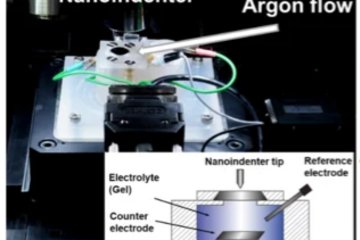All genres
41.
Talk
Operando study on the activation and corrosion of (photo)electrocatalysts. Colloquium, Walter Schottky Institut
, München, Germany (2022)
42.
Talk
Operando study on the activation and corrosion of (photo)electrocatalysts. Colloquium, Ludwig-Maximilians-Universität
, München, Germany (2022)
43.
Talk
Photocatalytic water splitting and photocorrosion of BiVO4. International Workshop Microscale Motion and Light, Dresden, Germany (2019)
44.
Talk
Dissolution of Pt and the Consequences for Fuel Cell Operation. 97th Canadian Chemistry Conference and Exhibition, Vancouver, B. C., Canada (2014)
45.
Talk
Elektrochemie mit Online-Spurenanalytik mittels ICP-MS. 26. Spektrometertagung, Friedrichshafen, Germany (2013)
46.
Talk
Effect of Cathodic Polarization on the Electrochemistry of Gold Surfaces. 63rd Annual Meeting of the International Society of Electrochemistry, Prague, Czech Republic (2012)
47.
Talk
E_ect of Cathodic Polarization on the Electrochemistry of Gold Surfaces. 63rd Annual Meeting of the International Society of Electrochemistry
, Prague, Czech Republic (2012)
48.
Talk
A Combined Analytical and Electrochemical Method to Evaluate the Stability of Thermal Spray Coatings. 81. AGEF Seminar „Tribocorrosion“, Düsseldorf, Germany (2005)
49.
Talk
Mechanismen der anaeroben Biokorrosion des Eisens. 22. Sitzung des DECHEMA Arbeitsausschuss „Mikrobielle Materialzerstörung und Materialschutz” gemeinsam mit GfKORR Arbeitskreis „Mikrobiell beeinflusste Korrosion”, Frankfurt, Germany (2002)
50.
Poster
In-operando photocorrosion study on BiVO4 photoanodes. International Bunsen Discussion Meeting, Taormina, Italy (2019)
51.
Poster
Korrosionsuntersuchungen an triboresistenten Höchstleistungsbeschichtungen. GDCh Jahrestagung 2005, Fachgruppe Angewandte Elektrochemie, Düsseldorf, Germany (2005)
52.
Poster
Korrosionsuntersuchungen an triboresistenten Höchstleistungsschichten. 79. AGEF Seminar - 25 Jahre Elektrochemie in Düsseldorf, Düsseldorf, Germany (2004)
53.
Poster
The kinetics of simultaneous indium deposition and hydrogen evolution on indiumphosphide and gold. 53rd Meeting of the International Society of Electrochemistry, Düsseldorf, Germany (2002)
54.
Preprint
Probing the stability window of electrodeposited MnO2 for the acidic oxygen evolution reaction. ChemRxiv: the Preprint Server for Chemistry Version 1 (2025)
55.
Preprint
Operando Insights on the Degradation Mechanisms of Rhenium-doped and Undoped Molybdenum Disulfide Nanocatalysts for Electrolyzer Applications. arXiv (2023)











